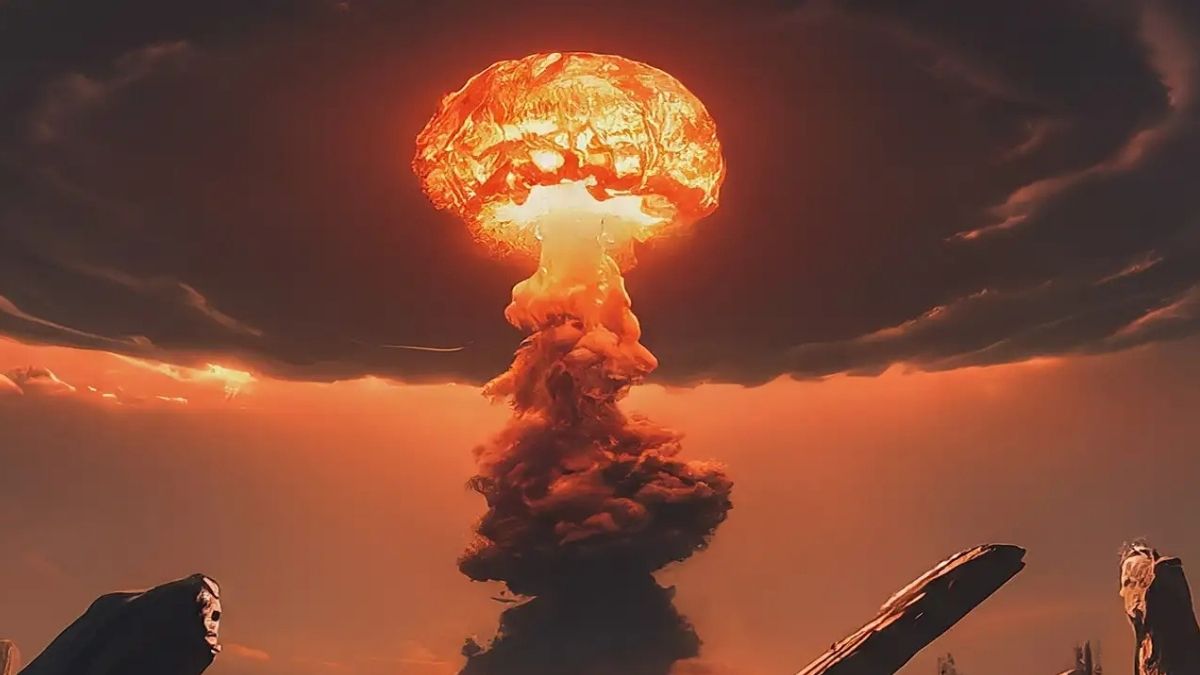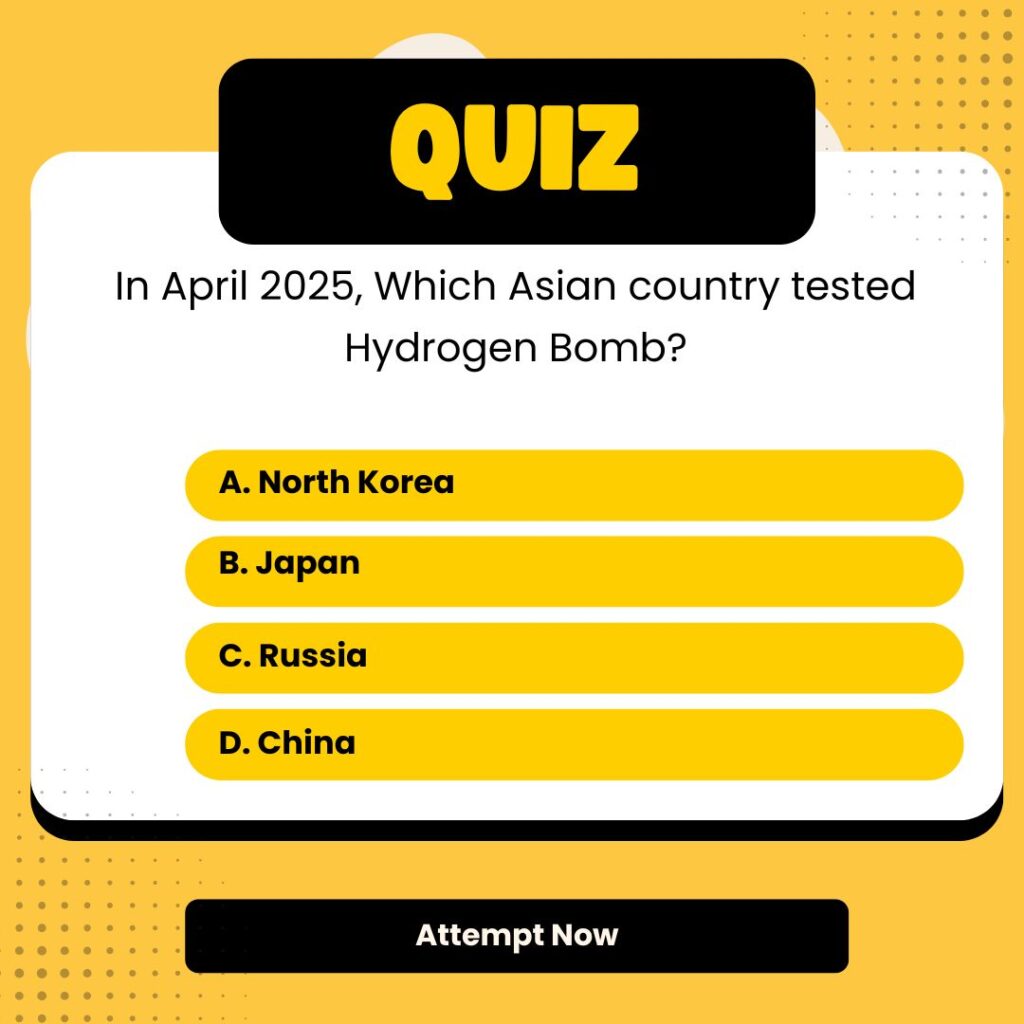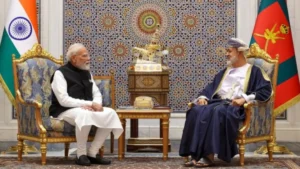China has tested a revolutionary type of hydrogen bomb that functions without traditional fissile materials like uranium or plutonium. Instead, it uses advanced fusion techniques such as magnesium hydride-based fusion, raising serious concerns about arms control, international law, and global security. This advancement could potentially redefine how nuclear weapons are perceived and regulated in modern warfare.
Key Points
What is a Hydrogen Bomb?
- Also called a thermonuclear bomb.
Two-stage mechanism
- Primary Stage (Fission): Initiated using uranium-235 or plutonium-239 to generate extreme heat and pressure.
- Secondary Stage (Fusion): Hydrogen isotopes (deuterium & tritium) fuse under extreme conditions, releasing immense energy.
What is a Fissile-Free Hydrogen Bomb?
- No uranium or plutonium used.
Employs alternative ignition systems,
- Inertial Confinement Fusion (ICF): Uses high-powered lasers to compress and heat fuel.
- Magnetic Compression (e.g., Z-pinch plasma systems): Uses magnetic fields to initiate fusion.
- Hydrogen isotopes still undergo fusion, but without nuclear radiation or fallout.
Key Concerns
Legal Loophole
- Treaties like NPT and CTBT define nuclear weapons based on fissile materials.
- These bombs bypass such definitions, posing a legal grey area.
Ease of Development
- Fusion fuels like deuterium and tritium are less regulated than fissile materials.
- Fusion technologies are dual-use, often part of civilian research.
Proliferation Risk
- Could be misused by rogue states or terrorist groups.
- Harder to track or detect due to lack of radiation signature.
Asymmetric Warfare
- Compact, powerful, and non-radioactive.
- Usable in covert attacks, gray-zone warfare, industrial disguises, or smuggling operations.
Way Forward
Update Global Treaties
- Broaden CTBT to include non-fissile fusion tests.
- Define nuclear weapons by energy output, not just fissile material.
Create New Verification Mechanisms
- Establish a Fusion Weapons Verification Body (FWVB) under the IAEA.
- Model it after OPCW, which oversees chemical weapons.
India’s Strategy
- With its credible minimum deterrence policy, India must adapt.
- Invest in technologies to detect non-radiological detonations and fusion-based threats.
| Summary/Static | Details |
| Why in the news? | China Has Tested A Revolutionary Type Of Hydrogen Bomb |
| Recent Development | China tests a fissile-free hydrogen bomb using magnesium hydride |
| Traditional H-Bomb Mechanism | Fission (U-235/Plutonium) → Fusion (D-T isotopes) |
| New Fusion Techniques | Inertial Confinement Fusion, Magnetic Compression (Z-pinch) |
| Global Treaty Challenge | Circumvents NPT & CTBT due to lack of fissile material |
| Security Concerns | Dual-use risks, proliferation, covert use in asymmetric warfare |
| Proposed Solutions | Revise legal frameworks, establish FWVB under IAEA, better surveillance |
| Implications for India | Need for fusion-detection capability and strategic policy adaptation |




 Brazil Hands Over BRICS Presidency to In...
Brazil Hands Over BRICS Presidency to In...
 India–Oman CEPA Signed to Boost Trade an...
India–Oman CEPA Signed to Boost Trade an...
 India and Saudi Arabia Sign Visa Waiver ...
India and Saudi Arabia Sign Visa Waiver ...







